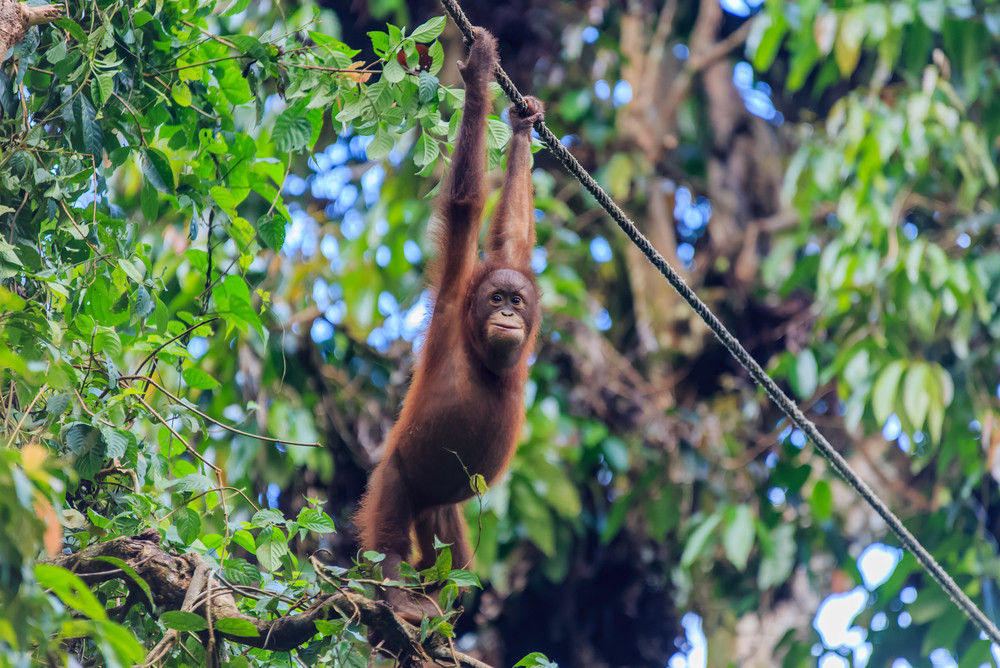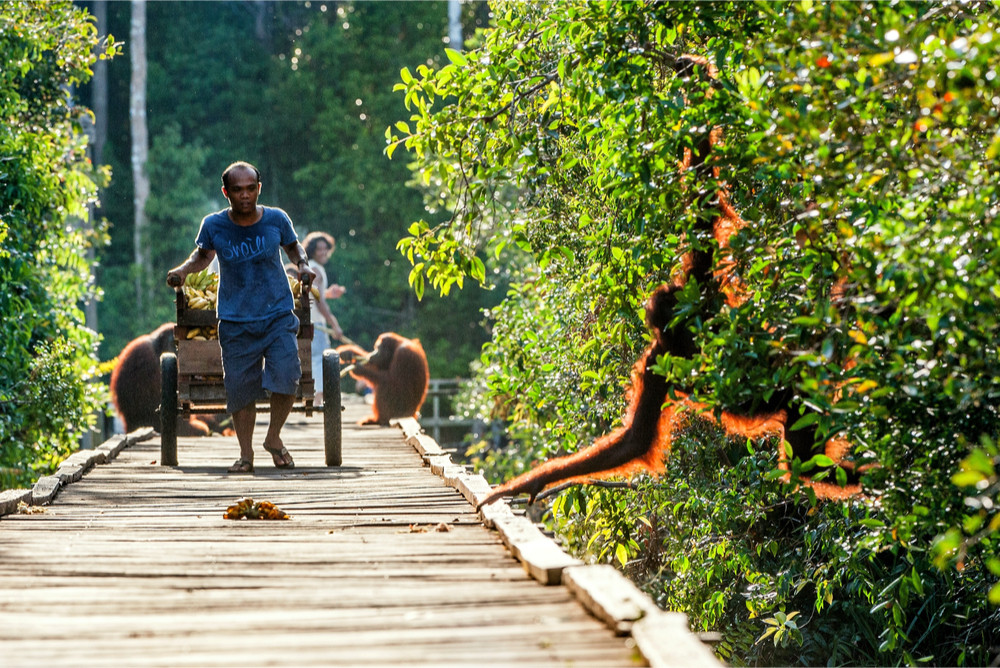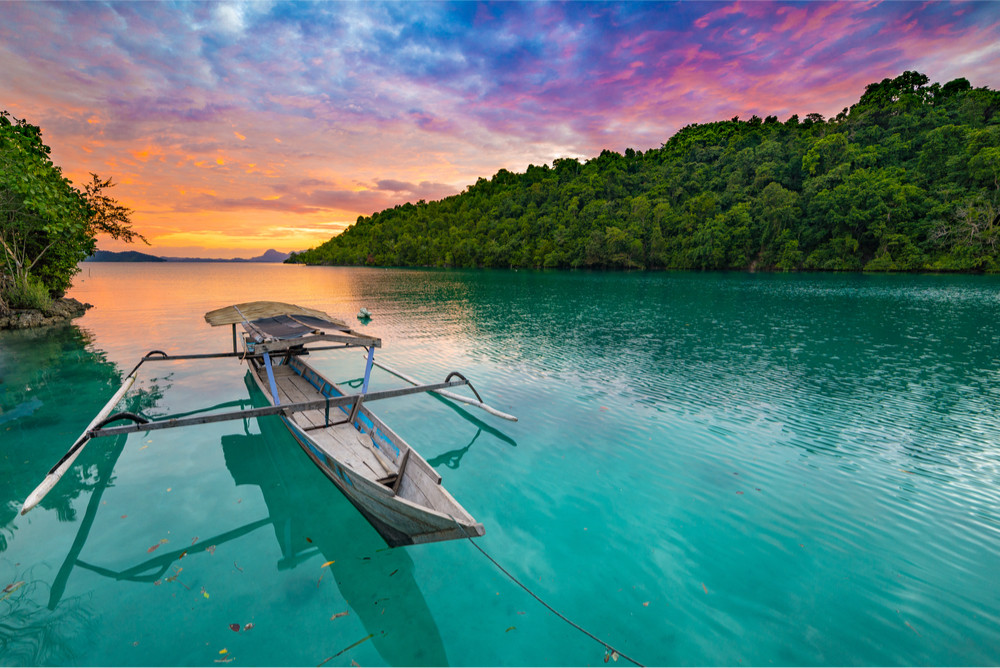For a large number of travelers, Indonesia is Bali. Accounting for over 60% of tourist travel to the country, there are countless things to do in Bali thanks to its incredible beaches, emerald-green rice fields, cascading waterfalls, as well as its unique cultural, spiritual and artistic treasures. But with over 17,000 islands that host some of the most fruitful cultural and natural diversities in the entire world, the Indonesian islands are clearly a whole lot more than Bali alone. So, let’s venture beyond Bali and have a peek at a few of the best islands in Indonesia that are hiding in plain sight:
Java Indonesia

Jakarta, located in West Java, was my first point of contact in the Indonesian islands. This capital city is a chaotic metropolis, known for its colonial relics, vibrant markets, and beautiful mosques. The city is bustling, and also has plenty of flavor and color. Founded in the 4th century and colonized by the Dutch East Indies, Jakarta has long been served as a critical Indonesian island port. This city of over 10 million people has a multifaceted culture with Javanese, Dutch, Chinese, and Arabic influences.
A train ride from Jakarta brought me to Yogyakarta, also called “Yogya”. It’s an artistic city that is strategically located and serves as a base for quick trips to other enchanting places, like Borobudur, Prambanan, and Dieng Plateau.

Located 40 km from Yogya, Borobudur is one of the largest Buddhist temple complexes in the world. The temple has survived the wear of time, earthquakes, and even terrorist attacks. Once a year, Indonesian island Buddhists celebrate Vesak in this world heritage site. Just an hour away, Prambanan is a 9th-century Hindu temple and a UNESCO World Heritage Site with more than 200 temples which preserve the vestiges of Hindu culture in Java.
Surrounded by temples and breathtaking nature is Dieng Plateau, which was formerly a crater. Today, it’s a volcanic lake that frequently changes color due to the sulfur concentrated in its waters.

Crossing the wild East Java, with expansive coffee plantations, rolling hills, colonial-era boulevards, and a laid-back lifestyle, it seemed that I landed onto a different island entirely.
Indonesian Borneo

Kalimantan, the Indonesian part of the island of Borneo, has recently come an exciting tourist destination for adventure travel and is undoubtedly one of the best islands in Indonesia. Gratefully, the grisly ritual of headhunting is a practice of the past. Instead, you’ll find natural wonders and endemic species, such as the pygmy elephant, nebulous panther, Malay bear, long-nosed monkey, and freshwater dolphin.
Camp Leakey in Tanjung Puting National Park is home to a rehabilitation program for orangutans where you can see these fuzzy red-haired creatures being fed and interact with their offspring.

21st-century Borneo is a fast-changing region. Logging and oil palm plantations have destroyed a considerable part of this Indonesian island’s sacred rainforests, and this trend is likely to continue in the near future, considering depleting oil reserves.
But productive forces are at work in Borneo, and not everything is bad news for the environment. Particularly, ecotourism and sustainable tourism are playing an essential role in the economy of the island. Despite the rapid pace of change, daily life still spins around the river and longhouse. For me, it’s the traditional hospitality of Borneo’s tribal people, as much as the tropical rainforests and rich fauna themselves, that make Borneo such a mystical place to explore.

One of the easiest ways to explore the Borneo jungle is to do it by boat. I toured on a traditional Indonesian island klotok, which are covered houses made of wood, and from the upper deck, I could see the dense rainforest as we moved along the river. The crew of the ship included the person in charge of the boat, cook, and expert guide.
Sulawesi Indonesia

Four long peninsulas that look like tentacles joined together make up Sulawesi, the eleventh largest island in the world (and one of the best islands in Indonesia outside of Bali). The sea is so ubiquitous in Sulawesi that the earth seems to surrender itself before it. Its volcanic nature generates sea beds covered with coral and brimming with vibrant sea life. Traveling from one peninsula to another is usually more comfortable by sea than by the winding roads.

Despite being a city with the majority Muslim population, four ethnic groups coexist here, each with its own dialect. This spot was super during the colonial period which drew a lot of travelers in and made it an epicenter of business. In Makassar’s streets, you can see the Catholicism left by the Portuguese, Dutch infrastructure, Protestant churches and the fort of Rotterdam, a structure built in the seventeenth century.

Taka Bonerate National Marine Park is the third largest atoll in the world with 15 islands. The park is 16 hours by boat from Makassar. An attractive underwater and jungle enclave, the Togean Islands are easily accessible thanks to the boats that connect Ampana and Gorontalo. The city of Manado, with its international airport, allows access to Pulau Bunaken National Marine Park, which is considered one of the best underwater destinations in the world for its 300 types of coral and 3,000 species of fish.